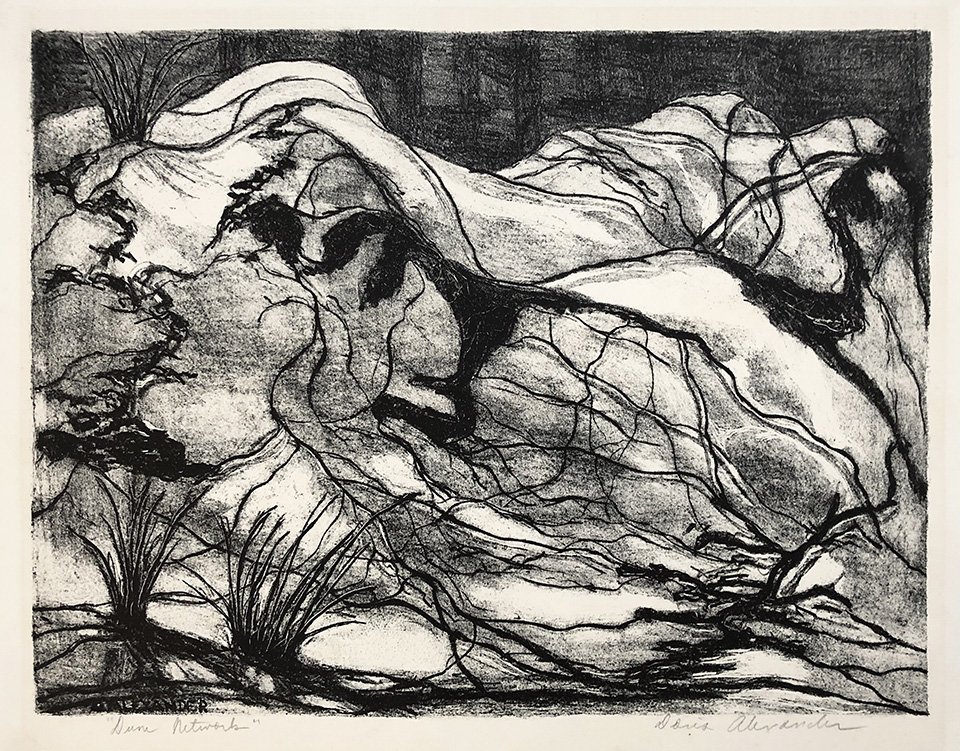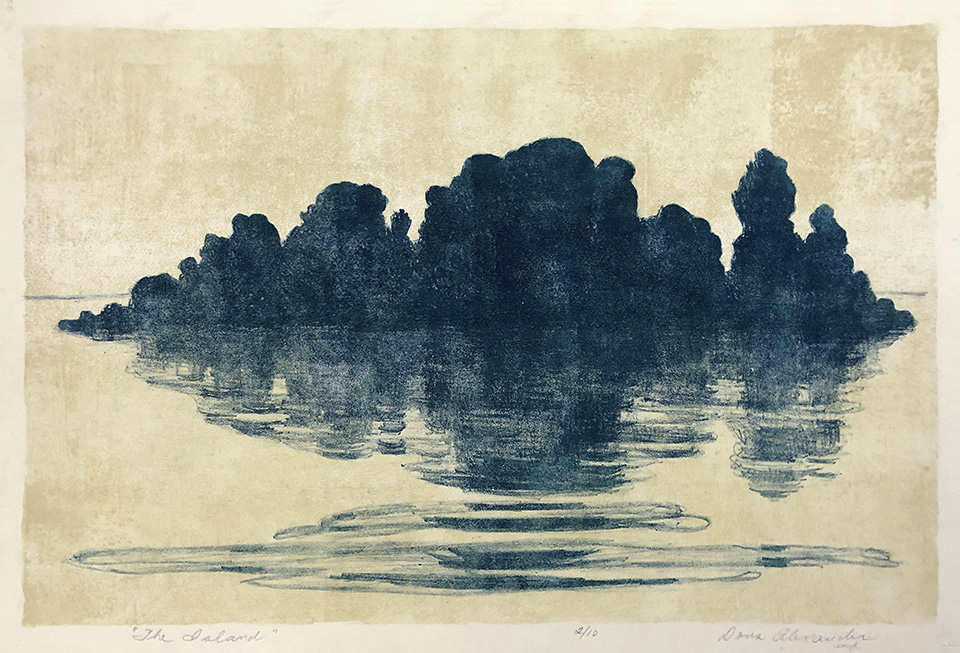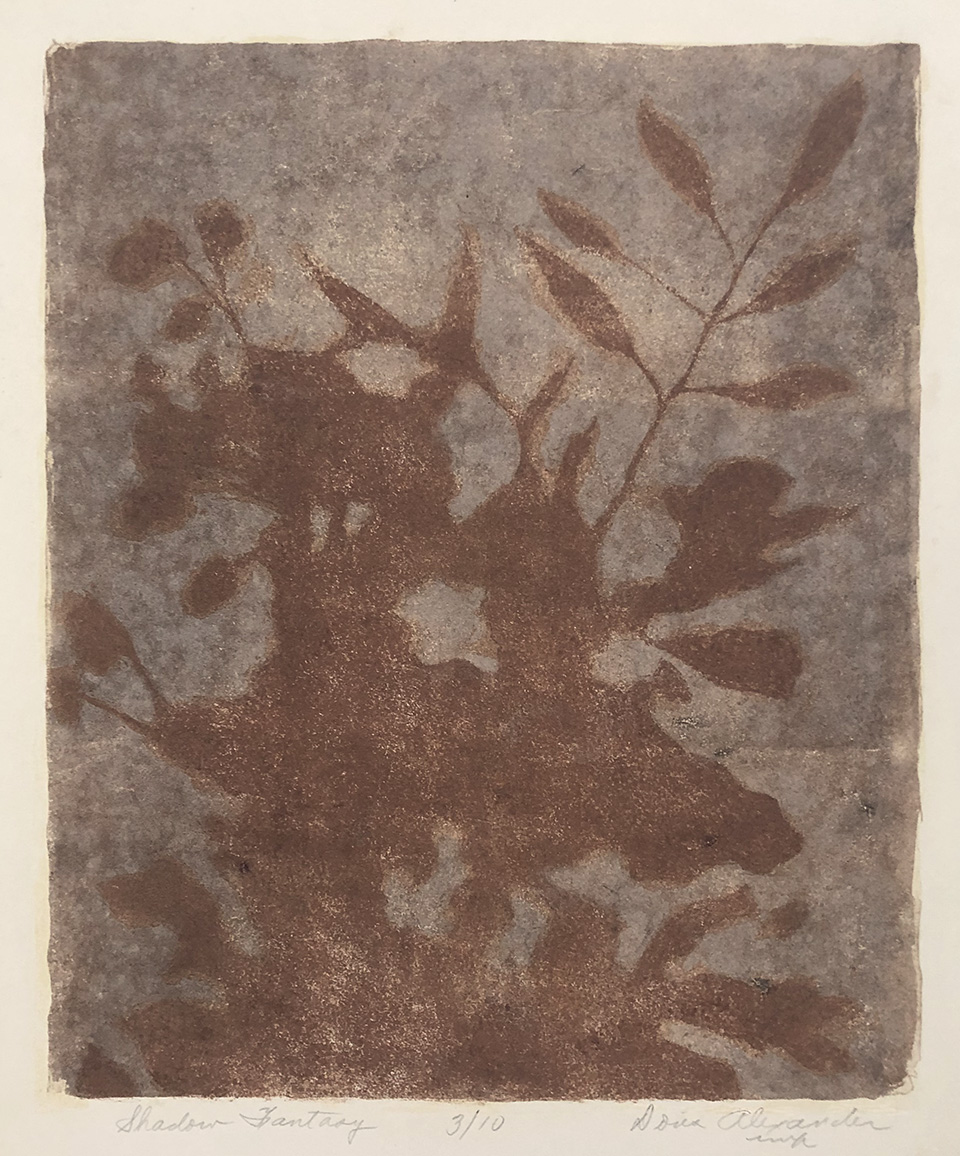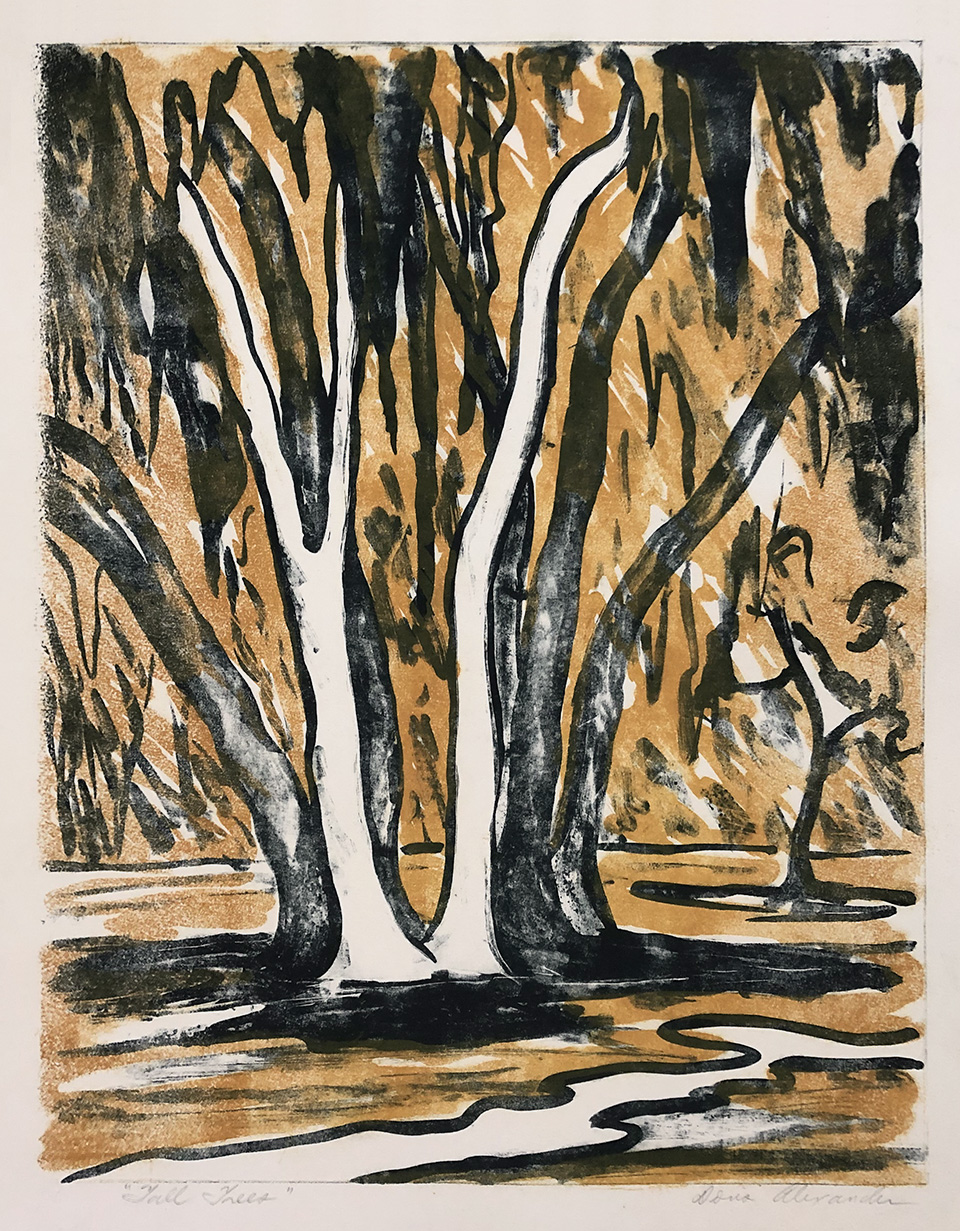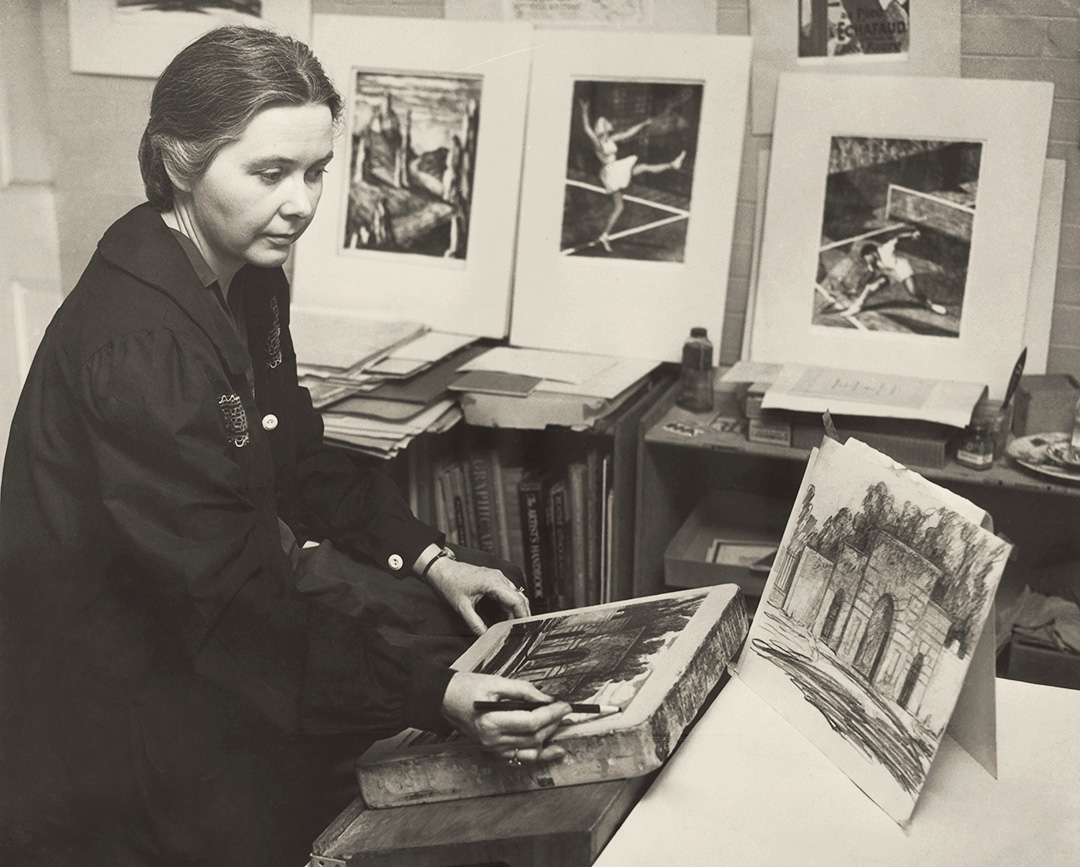In PART ONE of this four-part series, we will examine examples of a variety of abstract works from the Dixie Art Colony Foundation Permanent Collection. Examples of both SURREALISM and ABSTRACT EXPRESSIONISM are included. Under each work of art, we have indicated the movement that we think best describes the work.
When it comes to categorizing nontraditional types of artwork, the terminology can be a bit confusing. In the broader sense, ABSTRACTION is based on the concept of taking traditional subjects from reality and presenting them in a nontraditional manner that is different from the way the subjects are normally viewed. The origin of abstract art can be traced back to the late 19th century, when a decline in the appreciation of REALISM occurred. Within the realm of abstract art, a variety of movements transpired over the years. Terms such as NON-OBJECTIVE ART, ABSTRACT EXPRESSIONISM, SURREALISM, FAUVISM, and CUBISM are abstract movements that occurred over an extended time period. There is a fine line between the different movements, particularly SURREALISM and ABSTRACT EXPRESSIONISM. In very simplistic terms, works done in SURREALISM have a dream-like quality and include detail and perspective. In contrast, works of ABSTRACT EXPRESSIONISM concentrate on the expression of a subject matter with bold strokes and little detail.
Surrealism was a movement that developed in Europe after World War I through which artists painted unnerving and illogical scenes. Through Surrealism, they created strange creatures from everyday objects and developed techniques that allowed the unconscious to express itself. Abstract Expressionism was a post–World War II art movement. It was the first American art movement to influence art worldwide, placing New York City at the center of the art world, a distinction previously held by Paris, France.
DORIS ALEXANDER THOMPSON, What Strange Beast, n.d., Surrealism; DAT-2020.AW.0016
This color stone lithograph shows a piece of beached driftwood posing as some type of strange monster.
DORIS ALEXANDER THOMPSON, Dune Networks, n.d., Surrealism; DAT-2020.AW.0017
This black and white stone lithograph shows a sand dune covered with a network of vegetation. (The original study sketch completed in 1956 at Pawleys Island, SC, is included in the collection.)
DORIS ALEXANDER THOMPSON, The Island, n.d., Abstract Expressionism; DAT-2020.AW.0018
This color stone lithograph shows a small island of trees and their reflection in the surrounding water.
DORIS ALEXANDER THOMPSON, Shadow Fantasy, n.d., Abstract Expressionism; DAT-2020.AW.0019
This color stone lithograph shows shadows cast by vegetation. The result looks similar to Batik Fabric.
DORIS ALEXANDER THOMPSON, Tall Trees, n.d., Abstract Expressionism; DAT-2020.AW.0015
This color stone lithograph shows a unique cluster of tree trunks. (The original study sketch for this lithograph is included in the DAC Foundation Collection.)
DORIS ALEXANDER THOMPSON (1905-1995) shown in her studio. DAT-2020.PH.0002
In PART-TWO, we will look at abstract examples by Dixie Art Colony artists Carlos Alpha "Shiney" Moon and Richard Blauvelt Coe from the DAC Foundation Collection. They, like several other colonists, began to experiment with ABSTRACTION during the late 1940s and the 1950s.
MORE ABOUT DORIS ALEXANDER THOMPSON
Dixie Art Colony Foundation, Wetumpka, Alabama


